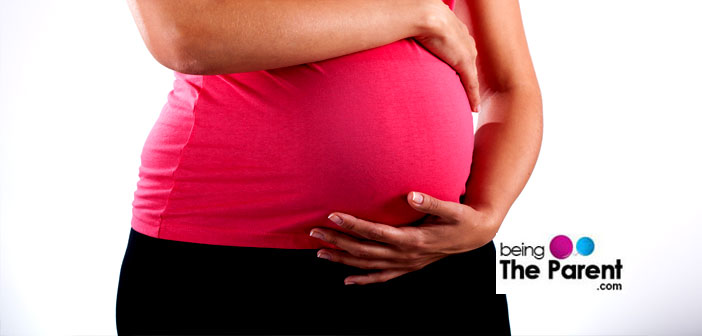Pregnancy and delivery are the major occurrences in your life. Any type of bleeding during pregnancy is scary. Find out everything about Subchorionic Hematoma Bleeding During Pregnancy.

Bleeding during first trimester of pregnancy
What is subchorionic hematoma?
Subchorionic hematoma in first trimester of pregnancy
What causes subchorionic hematoma?
Is subchorionic hematoma dangerous during pregnancy?
What are the symptoms of subchorionic hematoma?
How is subchorionic hematoma diagnosed?
What are the possible complications and risks of subchorionic hematoma?
How can subchorionic hematoma treated?
Bleeding During First Trimester Of Pregnancy
The most common and fearful situation that appears during pregnancy is bleeding. Even though bleeding throughout pregnancy is truly a motive for worry, nearly one-third of the pregnant women might have experienced slight bleeding or spotting at some point of time during their pregnancy, especially in the first trimester. The majority of these bleeds are harmless and pose no threat to mother or child.
But sometimes, no matter how negligible is the bleeding, spotting can be an indicative of issues like miscarriage, placenta previa, and even ectopic pregnancy (pregnancy in which fetus develops outside the womb). Hence, it is imperative and absolutely critical that you consult your doctor if you notice any bleeding, spotting or anything that seems bothersome.
What Is Subchorionic Hematoma?
Subchorionic hematoma or Subchorionic haemorrhage (SCH) is blood huddling and clotting between the membrane of the placenta and the wall of the uterus.
Sometimes this condition can’t be detected immediately because of unaccompanied bleeding or pain. In such cases, SCH usually gets detected during the routine scanning around the eighth week. Occasionally women complying vaginal bleeding are diagnosed with SCH.
Subchorionic Hematoma in First Trimester Of Pregnancy
Early trimester bleeding was earlier thought to be an impending sign of a miscarriage. Some women observe vaginal bleeding during the first trimester of pregnancy, which is mostly harmless. Commonly referred to as a blood clot, there is a very likely chance to have a normal pregnancy, but you must seek your doctor’s advice.
What Causes Subchorionic Hematoma?
There is no acknowledged cause for SCH. However, many researchers presume that, in the course of the implantation of the egg, there are chances that the egg may slightly tear from the uterine wall in the early stage of pregnancy. This can cause bleeding and subsequent formation of the blood clot within the tissue (hematoma).
Is Subchorionic Hematoma Dangerous During Pregnancy?
How dangerous is your subchorionic hematoma depends on the size of the hematoma to a large extend, as hematoma ranges in size. If you are having a small hematoma, you may not even know about it till a trained eye detects it during your routine ultrasound scanning.
Most of such small clots resolve on their own by bleeding out or get simply absorbed by your body without causing any harm to you or your child other than scaring you by causing bleeding now and then.
On the other hand, Subchorionic hematoma, when grows larger makes the pregnancy riskier. You doctor will advise the further course of action depending on the size of the blood clot.
What Are The Symptoms Of Subchorionic Hematoma Bleeding During Pregnancy?
As we explained earlier, if the hematoma is small in size, there will be no symptoms. But when the size of the clot increases the more symptoms start to surface like:
- Vaginal bleeding, which can be heavy or light. The amount of using ultrasoundbleeding can be directly proportionate to the size of the clot
- Threatened miscarriage
- Occasionally abdominal pain is also reported

How Is Subchorionic Hematoma Diagnosed?
Diagnosing SCH is done by studying the symptoms and by using ultrasound scanning. Even if you do not show symptoms, routine ultrasound scanning will spot your hematoma and can specify its size, the rate of bleeding. It also reveals where the blood is getting collect. It also shows whether the placenta is damaged due to the fattening clot.
Sometimes hematoma can be tough to spot as the black mass appears as another placenta. In such cases, if the fetus is looking healthy even during vaginal bleeding when observed through ultrasound doctors diagnose SHC
What Are The Possible Complications And Risks Of Subchorionic Hematoma?
Subchorionic Hematoma Bleeding During Pregnancy has its share of risk. If your clot does not disappear by bleeding itself out or being absorbed by your body, the risk factors can, unfortunately, increase.
- Hematoma turns to be critical when it grows too big that the body cannot absorb it. Also, it is dangerous when the hematoma develops in a niche that makes separation of the placenta from the uterine wall more easily
- The risk of spontaneous abortion increases if such a big clot is formed during the early weeks of the first trimester. The clot which detaches itself from the uterine wall, owing to its big size triggers a miscarriage
- The large hematoma during later pregnancy may result in complications such as preterm labor, restricted fetal growth or even stillbirth
- If you are diagnosed with SCH, you are likely to go through placental abruption. Placental abruption is a condition in which placenta separates from the wall of the uterus, which results in severe bleeding. This can be fatal for both mother and child
How Can Subchorionic Hematoma Bleeding During PregnancyTreated?
Once your doctor detects SCH, he will immediately start treatment to avoid miscarriage. Call your medical examiner every time you come across any bleeding or spotting. Owing to the fact that surgery is not an option, your doctor may advise for the following:
- Complete bedrest
- Abstinence from sex completely
- No more exercises because exercises increase heartbeat. When heart pumps more blood the bleeding tends to increase
- No lifting of weights
- Avoid situations where you have to stand for a long time
- Should increase water consumption and the intake of fiber to avoid constipation as straining at toilet triggers bleeding
- Monitoring with ultra sound at regular intervals
- Prescribe blood thinners to bleed the clot out
Now you know everything about Subchorionic Hematoma Bleeding During Pregnancy. Vaginal bleeding is a very common occurrence these days owing to the change in lifestyles. However, the pregnancy periods are supposed to be completed without any type of bleeding till delivery. So you should not overlook even a simple spotting. we cannot prevent SCH because its cause is still unknown to us. Treatment at the right time and monitoring carefully thereafter can reduce the risk and offer you a safe pregnancy and good delivery.

